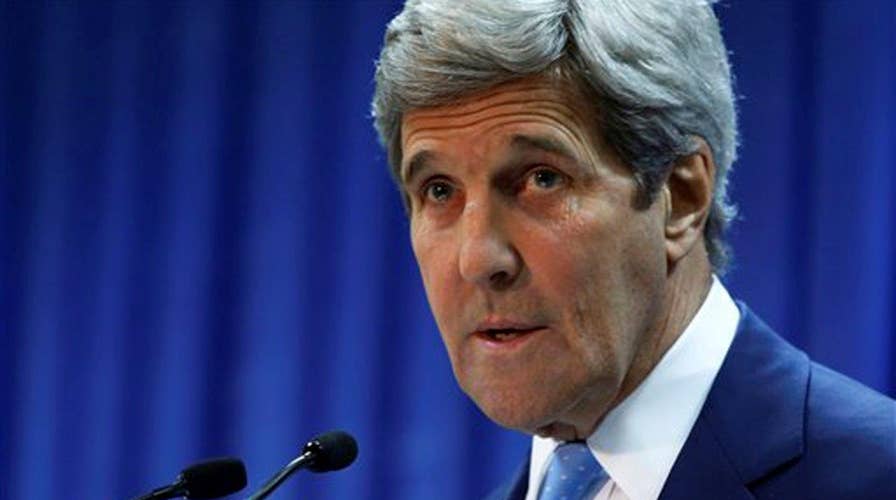Obama administration urges Iraqis to unite against ISIS
Correspondent Kevin Corke reports from the White House
The U.S. Air Force has deployed B-52 long-range bombers to the Middle East for the first time since the Gulf war ended over 25 years ago to begin striking the Islamic State in Iraq and Syria, officials said Saturday.
The U.S. Air Force Central Command said in a statement that an unknown number of B-52s will be based at Al Udeid Air Base in Qatar. The U.S.-led coalition’s Combined Air and Space Operations Center (CAOC) responsible for running the air war against ISIS is also based there.
"The B-52 will provide the Coalition continued precision and deliver desired airpower effects,” said Lt. Gen. Charles Q. Brown Jr., commander, U.S. Air Forces Central Command and Combined Forces Air Component.
Lt. Brown also indicated the B-52 bombers could be ready to bomb elsewhere in the Middle East should the need arise.
The announcement comes a day after Secretary of State John Kerry vowed to "turn up the pressure further" against ISIS during an unannounced visit to Baghdad Friday to meet with Iraqi's Prime Minister Haider al-Abadi as well as Kurdish and Sunni leaders.
The U.S. Air Force pulled its B-1 bombers in February and sent them back to the U.S. for maintenance. At the time, senior U.S. military leaders said there would be no capability gap.
But the number of bombs dropped on ISIS fell to an eight-month low in February, according to statistics published by the U.S. Air Force.
Despite flying only 7 percent of strike missions against ISIS in Iraq and Syria, B-1s dropped nearly 40 percent of all the bombs. In addition to carrying many more bombs than USAF fighter jets, the B-1 could loiter over the battlefield for up to 10 hours at a time. It can fly at supersonic speeds meaning it can be anywhere over Iraq and Syria in minutes.
For months, senior Air Force leaders have wanted the aging B-52 to take the place of the B-1s.
B-52s are not supersonic like the B-1s, but they also have long legs and can also loiter over the battlefield for nearly 12 hours and carry over a dozen precision guided bombs or up to 50 500-pound bombs. It can also carry nuclear weapons.
The first B-52s were built over 60 years ago during the Eisenhower administration. Despite two generations of bombers built since, B-52s still constitute the bulk of the US Air Force's long-range bomber fleet. They are based in Louisiana and North Dakota.
It's replacement is not due out until 2040.
B-52s dropped satellite-guided precision bombs on the Taliban in Afghanistan shortly after 9/11.
A B-52 dropped one of the first hydrogen bombs in the South Pacific in 1956.

